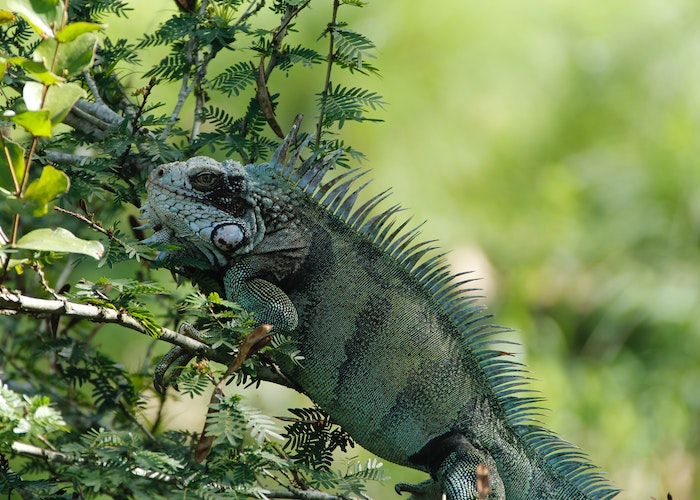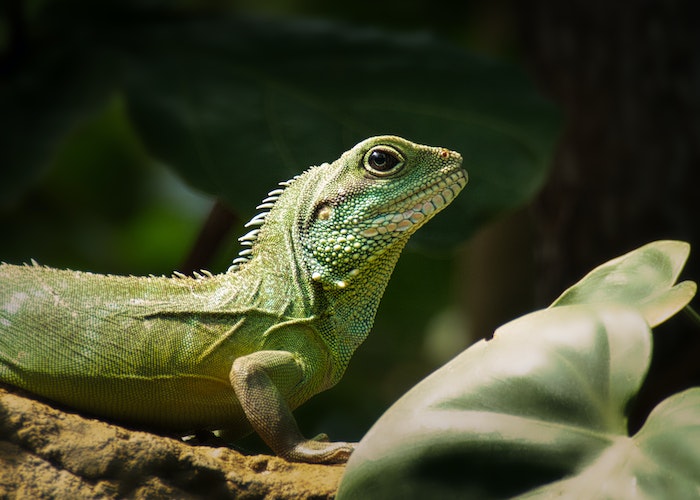Bearded dragons are popular reptilian pets known for their unique appearance and fascinating behavior. However, just like any other animal, they can experience behavioral issues that may indicate underlying health or environmental concerns. Recognizing these issues is crucial for ensuring the well-being of your bearded dragon and providing appropriate care.
In this article, we will understand how to recognize behavioral issues in bearded dragon and provide insights into their possible causes and solutions. By understanding these issues, you will be better equipped to identify and address behavioral abnormalities in your beloved reptile companion.
Points to recognize and address common behavioral issues

1. Normal Behavior of Bearded Dragons
Before delving into potential behavioral issues, it is essential to familiarize yourself with the typical behavior of a healthy bearded dragon. Understanding their natural behavior will help you distinguish between normal actions and potential problems. Topics covered in this section may include
- Basking behavior and thermoregulation
- Feeding habits and appetite
- Social interactions and territoriality
- Sleeping patterns and activity levels
2. Common Behavioral Issues in Bearded Dragons
This section will cover the most prevalent behavioral problems that bearded dragons may experience. Each issue will be discussed in detail, including its signs, potential causes, and recommended solutions. The following behavioral issues can be included
- Aggression and territorial behavior
- Appetite loss or changes in feeding behavior
- Excessive or inadequate basking and thermoregulation issues
- Abnormal sleep patterns or lethargy
- Repetitive behaviors, such as glass surfing or pacing
- Changes in social behavior or aversion to handling
- Self-harming behaviors or excessive scratching
- Abnormal defecation or urination habits
3. Detecting Behavioral Issues
Recognizing and diagnosing behavioral problems in bearded dragons can be challenging. This section will provide guidance on how to detect and monitor such issues effectively. It may include tips on observation, maintaining a behavior log, consulting with a reptile veterinarian, and seeking professional help when necessary.
4. Addressing Behavioral Issues
Once you have identified a behavioral issue in your bearded dragon, it is important to take appropriate steps to address and resolve the problem. This section will offer practical advice and strategies for managing and correcting various behavioral abnormalities. Possible solutions can include
- Environmental adjustments, such as optimizing temperature gradients and lighting
- Dietary modifications and nutritional considerations
- Handling techniques and socialization strategies
- Enrichment activities and mental stimulation
- Stress reduction techniques and creating a secure habitat
- Veterinary care and medication options
Here’s some behaviors of bearded dragon

Aggression
Aggression is one of the most common behavioral issues that bearded dragons experience. This may include biting, hissing, puffing out their beard, and tail whipping. Aggression can be caused by several factors, including stress, territorial disputes, hunger, and illness.
To address aggression, it’s essential to identify the cause. Ensure your bearded dragon is provided with enough food, water, and heat. If the aggression is due to territorial disputes, consider separating the bearded dragons into different enclosures. You may also want to provide more hiding places, basking spots, and climbing structures to reduce stress levels.
Lack of Appetite
Another common behavioral issue in bearded dragons is a lack of appetite. This may be due to stress, illness, or a change in the environment. If your bearded dragon isn’t eating, it’s crucial to identify the cause and address it immediately.
You can try to offer your bearded dragon a variety of foods and provide a comfortable environment that makes them feel secure. Consider feeding them in a separate enclosure or at a different time to avoid distractions or stress. However, if the problem persists, you should take your bearded dragon to a vet for further evaluation.
Lack of Energy
Bearded dragons are generally active and curious pets. If you notice that your bearded dragon is lethargic, it may be a sign of an underlying problem. Lack of energy may be due to an illness, stress, or inadequate lighting or temperature in their enclosure.
Ensure that your bearded dragon is provided with appropriate heat and lighting in their enclosure. Also, ensure that the enclosure is spacious enough to allow your bearded dragon to move around comfortably. If the problem persists, take your bearded dragon to a vet for further evaluation.
Tail Chasing
Tail chasing is a common behavioral issue in bearded dragons, and it can be caused by boredom or stress. It’s essential to provide your bearded dragon with enough space, toys, and hiding places to keep them entertained and reduce stress levels.
Glass Surfing
Glass surfing is when your bearded dragon moves around their enclosure repeatedly and forcefully. This behavior is common in bearded dragons and is usually a sign of stress or boredom. To address this issue, ensure that your bearded dragon is provided with an adequate environment that meets their needs.
Conclusion
Recognizing and understanding behavioral issues in bearded dragons is crucial for providing optimal care and maintaining their overall well-being. By familiarizing yourself with their normal behavior, being vigilant in observing changes, and taking proactive steps to address problems, you can help your bearded dragon lead a happy and healthy life. Remember, if you’re ever uncertain or concerned about your pet’s behavior, consult a reptile veterinarian for expert advice and guidance. With your attentive care and a little bit of knowledge, you can ensure a harmonious and fulfilling relationship with your bearded dragon companion.
